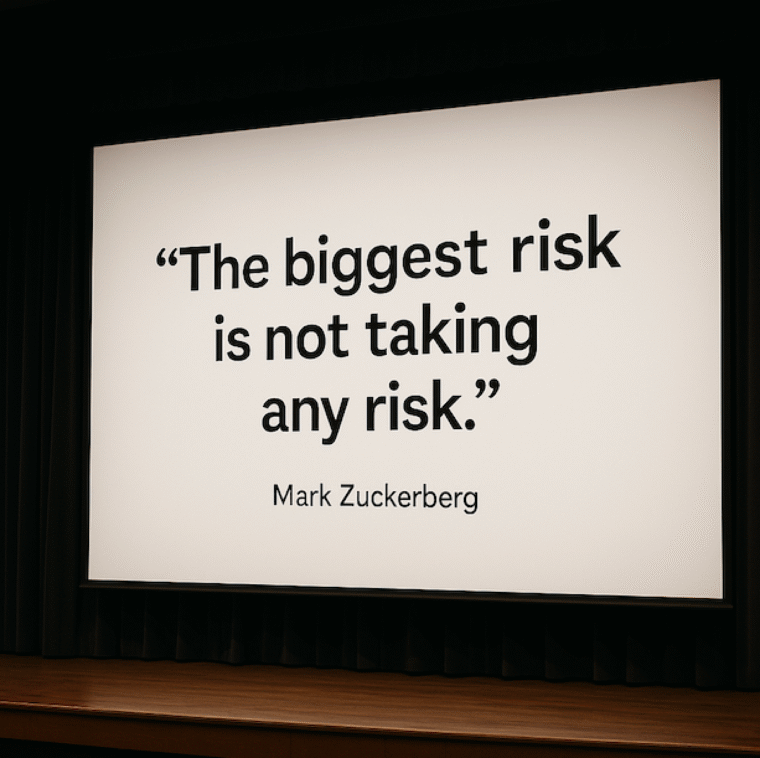What Is a Bucket List—And Why Yours Should Look Different Than Everyone Else’s
There’s a strange thing that happens when people hear the phrase “bucket list.”
We picture skydiving. The Maldives. Maybe a red convertible on a coastal road at golden hour.
All beautiful. But for most of us, the bucket list that actually changes our life looks quieter—and more personal.
For me, one of the most meaningful “bucket list“ goals wasn’t a travel destination at all. It was becoming a certified health coach and diving deep into a healthy lifestyle to take care of my own and my family’s health, which over time became a high-protein, high-fiber lifestyle that reshaped my energy, focus, and confidence and actually became a foundation KRKR books on amazon. It wasn’t flashy. It didn’t require a boarding pass. But it expanded my life in a way a souvenir never could.
That’s the heart of this article—and of this Topic: Living the List.
Your bucket list should be a lens that brings your own values into focus, not a scavenger hunt of other people’s dreams.
Below, we’ll define what a bucket list really is, why it must be different for everybody, and how to build one that you can actually live—starting this month.
What a Bucket List Really Is (and Isn’t)
A bucket list is a curated set of experiences and milestones that light you up—across seasons of life, not just someday. It is not a dumping ground of random fantasies, nor a comparison chart against strangers on the internet.
A good bucket list:
- Expresses your values. If growth matters to you, “learn to speak conversational Italian“ might be a good choice. If contribution matters, “fund a scholarship“ might be a suitable option.
- Spans different domains of life. Travel, learning, Wellness, relationships, creative work, home, finances, impact.
- Mixes scales. “Walk the Tuscany roads” can sit next to “host an elegant Sunday lunch for friends.”
- Is living. It evolves as you evolve. You don’t outgrow it; you edit it.
A poor bucket list:
- Mimics trends you don’t honestly care about.
- Measures status instead of meaning.
- Lives in a notebook you never open again.
Why Your Bucket List Should Look Different Than Everyone Else’s
Because your life is different. Your strengths, wounds, resources, culture, responsibilities, and dreams—all uniquely yours.
- Different definitions of success. For some, success is owning a home with a sun-lit kitchen. For others, it’s location freedom and carry-on luggage for life.
- Different seasons. A young parent’s list will prioritize local, affordable, time-bound experiences. An empty nester’s list might tilt toward longer immersions and big creative projects.
- Different sources of meaning. Maybe your joy is mastering the piano. It could be taking your parents on their first international trip. It may be finishing the novel you started five years ago.
- Different constraints. Budget, health, family commitments, visas—constraints don’t cancel your list; they design it. They nudge you toward solutions, not excuses.
When I pursued health coaching, it wasn’t glamorous. It required study hours, systems, and a willingness to change daily habits. However, it aligned with my deepest interests—Wellness, energy, and longevity—and it created a ripple effect across everything else: work, travel, creativity, and even how I show up for my family. That’s what a personal bucket list does: it compounds.
The Elegant Approach: Quality Over Quantity
Anyone can scribble 101 items and feel productive. The elegant approach is different:
- Fewer, richer experiences. Choose the version you’ll remember in high definition. Not “see Paris,“ but “Paris in November—rooftop jazz in Le Marais, day trip to Champagne, quiet mornings at Musée Rodin.”
- Designed moments. Upgrade the how, not just the what. A sunrise hike with a thermos of coffee and a handwritten note to yourself. A Michelin reservation paired with a back-alley street-food crawl the night before.
- Integration, not escape. A bucket list that complements daily life—learning, fitness, creative practice—will be lived more often than one that only exists in vacation mode.
Categories to Spark Your Thinking
Use these as lenses, not checklists. Your list can—and should—borrow from many.
- Travel & Exploration: cities that shape your worldview, national parks, architectural pilgrimages, luxury trains, sacred sites.
- Adventure & Nature: long-distance hikes, diving certifications, night-sky trips, multi-day cycling, ethical wildlife experiences.
- Culinary & Cultural: Kitchens and cookbooks, street food tours, wine regions, artisan workshops, language immersion, festivals.
- Learning & Creative Work: degrees and certifications, instruments, painting, photography, writing a book, launching a small brand.
- Health & Wellness: a way of eating that energizes you, strength goals, retreats, meditation, cold plunges, restful sleep as a practice.
- Home & Environment: a room designed with intention, a balcony garden, a statement library wall, and hosting traditions.
- Relationships & Community: annual trips with your child or best friend, hosting circles, volunteering, mentoring.
- Financial Freedom: debt-free milestones, investment goals, sabbatical funds, multiple income streams, and money education.
- Contribution & Legacy: philanthropy projects, scholarship funds, community art, teaching what you know.
How to Build Your Own Bucket List (Step by Step)
1) Start with Values, Not Venues
Before destinations or diplomas, list your top three values for this Season (for example: Vitality, Mastery, Connection). Every item should serve at least one of them.
- Hardcover Book
- Chic Notes (Author)
2) Choose Time Horizons
Create four sections in a notebook or doc:
- Lifetime (the big arcs)
- 5-Year Canvas (signature goals)
- This Year (12-month focus)
- This Season (the next 90 days)
This structure keeps your list from floating off into “someday.”
3) Brainstorm Without Editing
Set a 20-minute timer. Empty your head. Go big to small:
- Big: “Spend a month in Kyoto.”
- Medium: “Publish a short story in a literary magazine.”
- Small: “Take Mom to that tiny family-run restaurant she mentioned.”
Write everything. No judgment yet.
4) Filter for Meaning
Circle the items that feel like an exhale in your chest—not the ones that would impress someone else. Cross off anything that’s there to perform, not to live.
5) Design the Experience
For each circled item, draft the felt version:
- What does the morning feel like?
- Who is with you (or not)?
- What do you want to learn, taste, or notice?
Details transform vague wishes into lived reality.
6) Pick Your “North Stars“ and “Pebbles”
- 3 North Stars for the Year (signature, identity-shaping goals).
- 6 Pebbles for the next 90 days (small, doable actions that build momentum).
Example:
- North Star: “Earn a health-coaching certification.”
- Pebbles: research programs, book enrollment call, schedule study blocks, join a peer group.
- North Star: “Take a mother-daughter trip to Lisbon.”
- Pebbles: set dates, book flights, list 3 experiences, learn 20 Portuguese phrases.
- North Star: “Write 12 essays.”
- Pebbles: choose themes, set Sunday writing hours, and publish the first one.
- The Bucket List Journal: This Journal is a tool to help you stay accountable to your goals through a simple...
- Journal Features: In this journal, you'll find the 4 stages of goal achievement, do’s and don'ts of writing...
7) Budget and Logistics (Elegantly)
Money is a design constraint, not a deal-breaker. Draft a simple budget for each North Star: estimated cost, a funding plan (monthly set-aside, extra income streams), and date anchors (when bookings open, off-season windows, visa requirements).
8) Build Your Tracker
Use a notebook, a notes app, or a spreadsheet. Include:
- Item name + category
- Why it matters (1-line)
- Target window (dates/months)
- Milestones (bookings, lessons, equipment)
- Outcome (photos, reflections, lessons learned)
9) Put Dates on the Calendar
If it isn’t dated, it’s a wish. Block study hours, booking windows, travel time, and any prep (fitness, language practice, savings transfers). Treat these dates with respect.
10) Create Accountability
Tell a friend. Start a monthly “Living the List“ check-in. Share progress in a group or with a mentor. Accountability turns motion into momentum.
Prompts to Uncover What You Really Want
- If you could only keep five of your current commitments, which ones would you keep? Why?
- What did 10-year-old you think a great life included? What’s the adult version?
- Which place, if you visited it next Year, would change how you see your life?
- What skill would make every other goal easier or richer?
- What would a deeply healthy life feel like on an ordinary Tuesday?
- What could you do for someone else that they would remember forever?
- If you had $0 extra, what list items could you still live without this Season?
Write quick answers. Let your instincts speak before your intellect edits.
From List to Life: How to Actually Do the Things
Chunk and stack. Break oversized items into tiny steps (chunks), then stack them onto existing routines. If you already take evening walks, stack “learn 20 phrases in Portuguese“ onto the first 10 minutes.
Design friction out. If you want to go on sunrise hikes, keep your pack ready by the door. If you want to write, open your doc before bed, so the cursor greets you in the morning.
Use seasons. Winter for learning, spring for local adventures, summer for travel, fall for creative output. Seasonality keeps your list varied and sustainable.
Book the anchor. For trips or retreats, book one immovable piece (flight or course enrollment). The rest cascades.
Capture and reflect. After each item, write a short reflection: What did I learn? What surprised me? What’s the next micro-step this unlocks?
Common Obstacles (And Elegant Solutions)
“I don’t have time.”
You have choices. Trade 3 hours of passive scrolling per week for one language lesson, one essay draft, and one Saturday morning hike. Put them on the Calendar first; let life fill in around them.
“I don’t have the budget.”
Redesign the experience. Swap 5-star hotels for stunning boutique stays, travel in shoulder seasons, and prioritize quality moments over pricey optics. Set a small automatic transfer into a “Living the List“ fund.
“I don’t know where to start.”
Start small and soon. Brew an intentional coffee, write the first paragraph, book a local class, and plan a micro-adventure within 20 minutes of home. Motion reveals direction.
“I’m afraid I’ll do it ‘wrong.'”
There is no “right.“ There is your way. Journal your version of the experience. If you’re concerned about safety or ethics (such as wildlife or cultural sites), conduct thorough research, choose reputable operators, and approach the experience with respect.
“People will judge me.”
They might—and then they’ll move on. You, however, will still have a life to live. Choose the list that makes you proud when no one is watching.
Micro-Moments That Count (Small Ideas You Can Do This Month)
- Invite a friend to a phone-free sunset walk.
- Book a cooking class you’ve put off for years.
- Start a Sunday writing hour with tea and a timer.
- Build a capsule corner in your home: a chair, lamp, side table, and the three books that matter now.
- Plan a parent-child day trip with one meaningful stop.
- Create a “tasting tour“ in your own city—one perfect pastry or espresso bar per week for a month.
- Enroll in a short online course that aligns with your bigger goals (language, photography, investing basics, design).
Each micro-moment is a vote for the person you’re becoming.
Living the List (Not Just Writing It)
The list is a starting line, not a trophy shelf. When you build it from values, give it time horizons, and design the experiences with intention, it becomes a compass you can actually steer by.
And then something beautiful happens: your days begin to feel like your life—on purpose. You’re not waiting for a “someday trip“ to feel alive. You’re alive on a Tuesday afternoon, learning, creating, eating well, calling your mom, saving for something bigger, booking something braver, and noticing that this—this mix of ordinary and extraordinary—is precisely the life you wanted to live.
Welcome to Living the List.
- MAKE YOUR BIGGEST DREAMS COME TRUE – Dreams are only dreams until you have a plan. That's where the Legend...
- PLAN 100 UNFORGETTABLE ADVENTURES – Build a bucket list with 100 exciting adventures, travels, goals, and...
- Pedaci, Fabio (Author)
- English (Publication Language)














